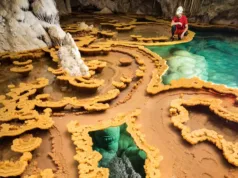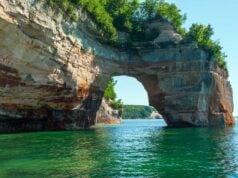Antelope Canyon is a breathtaking natural wonder located in the southwestern United States, specifically in the state of Arizona. It is one of the most famous slot canyons in the world, known for its stunning beauty and unique geological formations. Antelope Canyon is divided into two sections: Upper Antelope Canyon (also known as “The Crack”) and Lower Antelope Canyon (also called “The Corkscrew”).
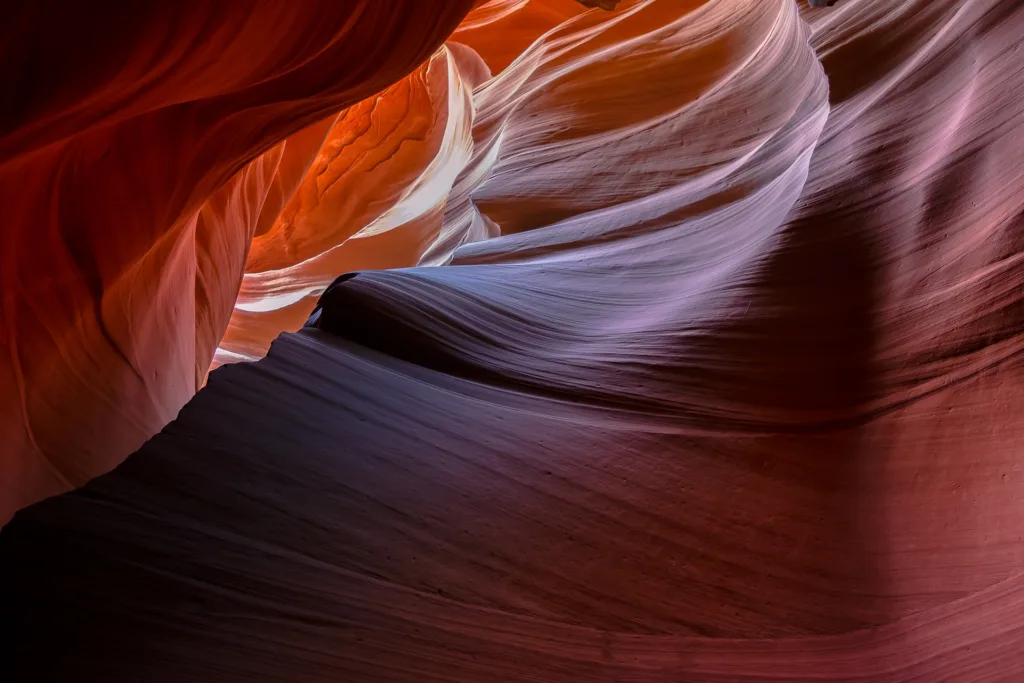
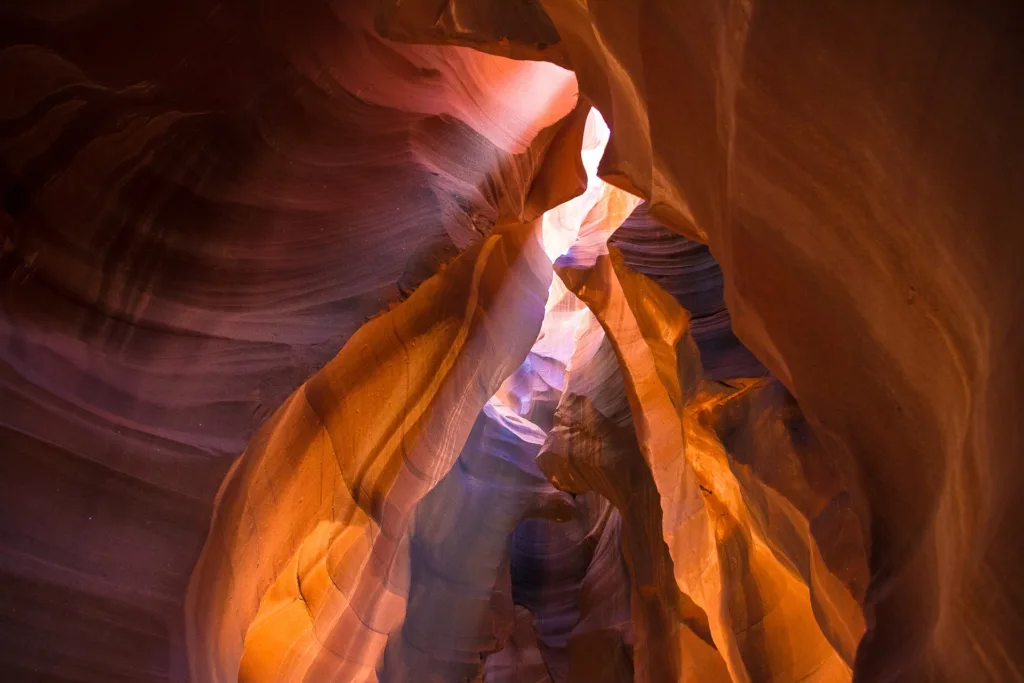
The canyon was formed over thousands of years by the erosion of Navajo sandstone, resulting in narrow passageways with smooth, flowing walls. The interplay of light and shadows in the canyon creates a surreal and magical atmosphere. Light beams often filter through the narrow openings above, illuminating the canyon floor with a vibrant array of colors. This spectacle attracts photographers, nature enthusiasts, and travelers from all around the globe.
Upper Antelope Canyon is the more accessible and visited section of the canyon. It is wider and has a level terrain, making it easier to explore. The beams of sunlight that filter through the cracks above are particularly famous in this section, creating mesmerizing photo opportunities. The canyon’s unique lighting conditions make it a favorite spot for photographers looking to capture stunning images.
Lower Antelope Canyon is slightly less crowded and offers a more adventurous experience. It features narrow passageways, ladders, and staircases that lead visitors through the lower levels of the canyon. Here, visitors can witness the intricate and swirling patterns etched into the canyon walls by years of water erosion. Lower Antelope Canyon is known for its distinct geological formations, including the famous “Corkscrew,” a winding section that showcases nature’s artistry.
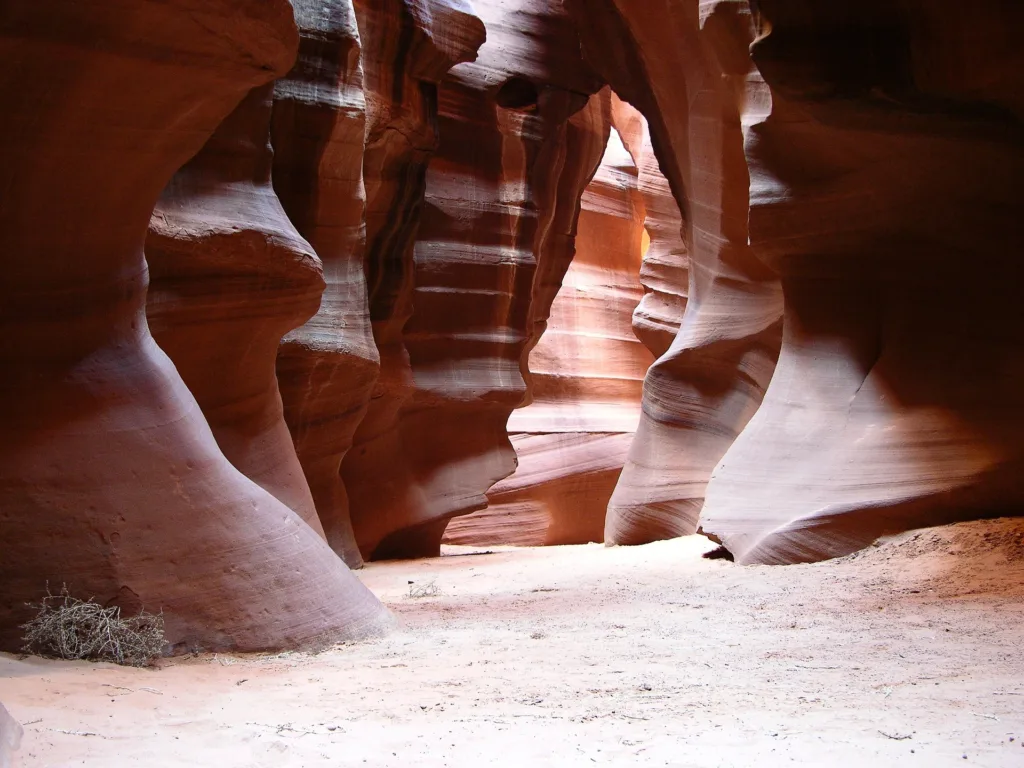
Both sections of Antelope Canyon are located on Navajo tribal lands, and visitors are required to join guided tours to explore them. The knowledgeable guides provide insights into the canyon’s history, geology, and cultural significance. They also assist in capturing the best angles for photography, as well as ensuring the safety of visitors during the visit.
It’s important to note that due to the fragile nature of the canyon and the potential for flash floods, access to Antelope Canyon can be limited or restricted at times. It’s recommended to check the weather conditions and book your tours in advance to secure your visit.
Antelope Canyon offers a truly awe-inspiring and otherworldly experience, allowing visitors to immerse themselves in the beauty of nature’s artistry. Whether you’re an avid photographer, a nature enthusiast, or simply seeking an unforgettable adventure, Antelope Canyon is a must-visit destination that will leave you in awe of its splendor.
Formation and Geological Background
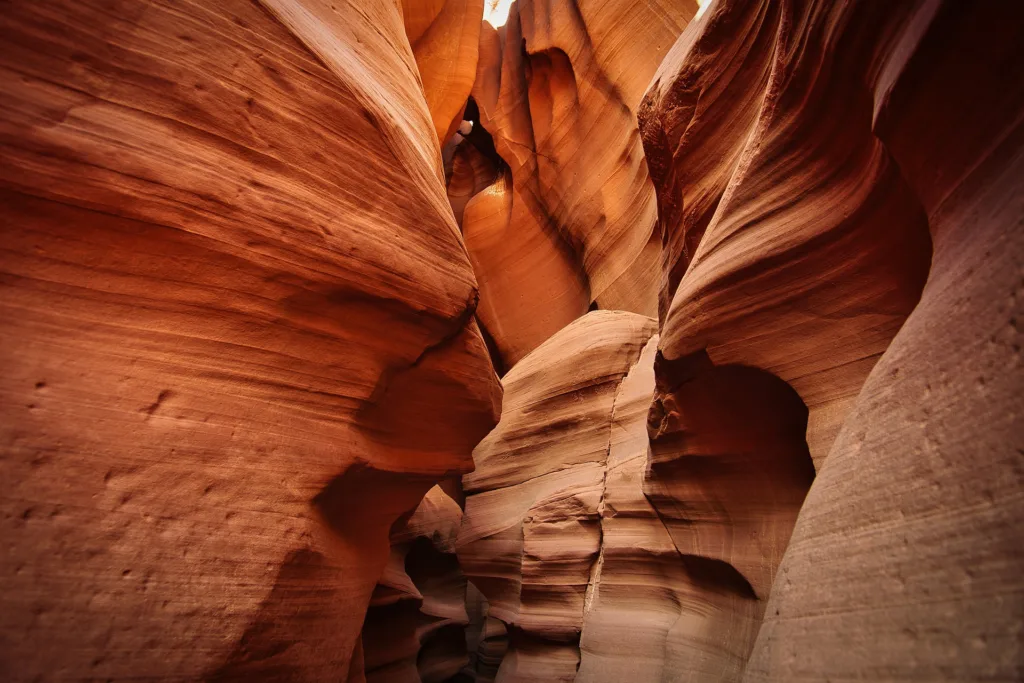
Antelope Canyon was formed through millions of years of erosion, primarily caused by flash floods. The canyon is located in the Navajo Nation near Page, Arizona, and is carved into the Navajo sandstone, a sedimentary rock formation that dates back to the Jurassic period, around 190 million years ago.
The formation of Antelope Canyon began with the deposition of sand, silt, and gravel in a vast desert region. Over time, these deposits were buried and compacted, eventually forming layers of sandstone. The Navajo sandstone, known for its vibrant reddish-orange hue, is comprised of cross-bedded layers that were deposited by ancient sand dunes.
The unique and picturesque shapes of Antelope Canyon are a result of the power of water. Flash floods, which occur during heavy rainstorms in the region, rush through the narrow cracks and passages, sculpting and smoothing the sandstone walls over countless years. The water, laden with sediment, acts as an abrasive force, gradually widening the canyon and creating its distinct shapes, curves, and undulations.
The most characteristic feature of Antelope Canyon is its narrow, slot-like passages with smooth, swirling walls. The combination of wind erosion and occasional flash floods has resulted in the iconic “slot canyon” formations that are so sought-after by photographers and visitors.
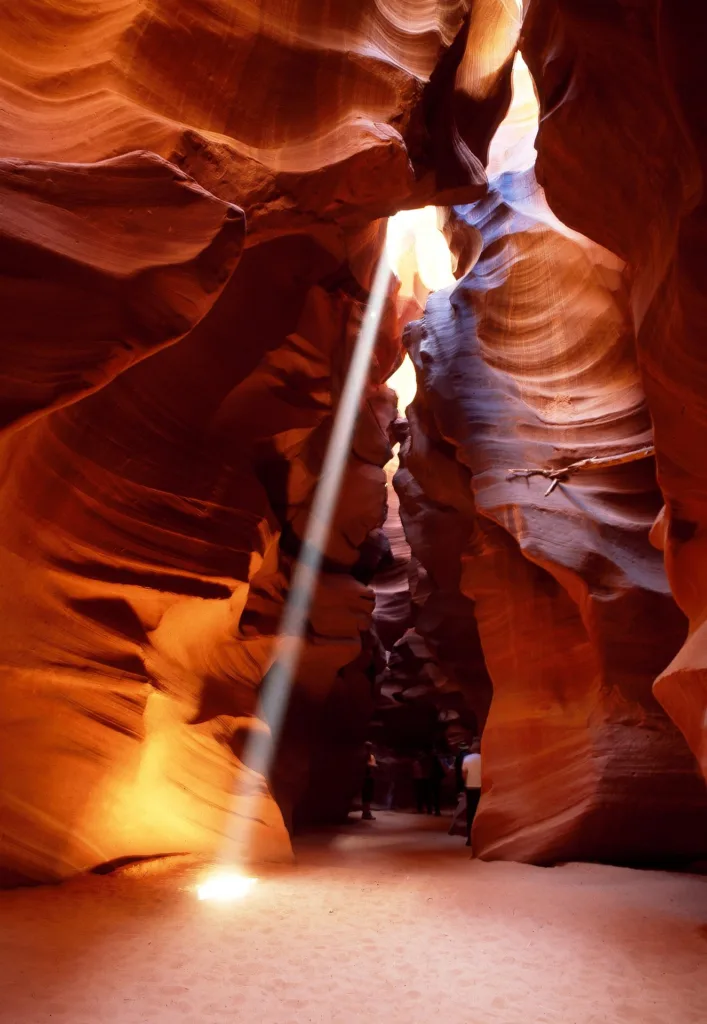
Another fascinating aspect of Antelope Canyon is the interplay of light and shadow. The narrow openings at the top of the canyon allow slivers of sunlight to penetrate the depths, casting enchanting beams of light that illuminate the canyon floor. This phenomenon creates a magical atmosphere, with vibrant hues and contrasting shadows dancing along the walls.
Due to the delicate nature of the sandstone and the potential for flash floods, the canyon experiences ongoing changes. Erosion continues to shape and transform Antelope Canyon, making each visit a unique experience.
Antelope Canyon is not only a geological marvel but also holds cultural significance for the Navajo people. It is considered a sacred place and holds a deep spiritual connection. The Navajo name for Upper Antelope Canyon is “Tse’ bighanilini,” which means “the place where water runs through rocks.” The canyon is a cherished part of Navajo culture and heritage.
Overall, Antelope Canyon’s formation is a testament to the power and beauty of natural forces. It showcases the captivating effects of water and time on the Earth’s landscape, creating a breathtaking and awe-inspiring destination for visitors to explore and admire.
Unique geological features and rock formations

Antelope Canyon, both Upper and Lower sections, is renowned for its unique geological features and exquisite rock formations that have been shaped by the forces of water and wind over millions of years. Here are some of the remarkable geological aspects and rock formations found in Antelope Canyon:
- Slot canyon formation: The most distinctive geological feature of Antelope Canyon is its slot canyon formation. Slot canyons are narrow, deep canyons with high walls that have been eroded by water rushing through them. The walls of Antelope Canyon rise high above visitors, with narrow passageways and smooth, curving walls that create a mesmerizing visual experience.
- Navajo sandstone: Antelope Canyon is carved into the Navajo sandstone, a sedimentary rock formation that dates back to the Jurassic period. The Navajo sandstone is known for its vibrant red and orange colors, which are intensified by the sunlight filtering through the narrow openings above. The sandstone layers exhibit cross-bedding patterns, revealing the ancient windblown sand dunes that formed the rock formation.
- Wave-like formations: The walls of Antelope Canyon display intricate wave-like formations, often referred to as “flowing sandstone.” These formations are the result of water erosion, with the floodwaters gradually carving and sculpting the sandstone walls into sinuous curves and patterns. The undulating walls create a sense of fluidity and add to the canyon’s unique aesthetic appeal.
- Corkscrew and spiral formations: Lower Antelope Canyon, also known as “The Corkscrew,” is particularly famous for its corkscrew and spiral formations. Visitors can witness twisting patterns and spiraling shapes etched into the sandstone walls, a testament to the power of water erosion. These formations add a sense of dynamism and intrigue to the canyon’s geological beauty.
- Sandstone alcoves: Throughout Antelope Canyon, visitors can observe various sandstone alcoves. These are recessed areas in the canyon walls that have been hollowed out by the erosive action of water. Alcoves often have smooth and curved walls, creating unique spaces within the canyon to explore and appreciate.
- Sunbeams and light shafts: One of the most captivating phenomena in Antelope Canyon is the interplay of light and shadow. Beams of sunlight filter through the narrow openings at the top of the canyon and create mesmerizing light shafts that illuminate the canyon floor. The beams of light interact with the sandstone walls, highlighting their textures, colors, and intricate details, transforming the canyon into a magical and ethereal environment.
These unique geological features and rock formations make Antelope Canyon a visual masterpiece. The combination of smooth, flowing walls, wave-like patterns, corkscrew formations, and the play of light and shadow all contribute to its extraordinary beauty, attracting visitors from around the world to witness nature’s artistry at its finest.
Planning a Visit
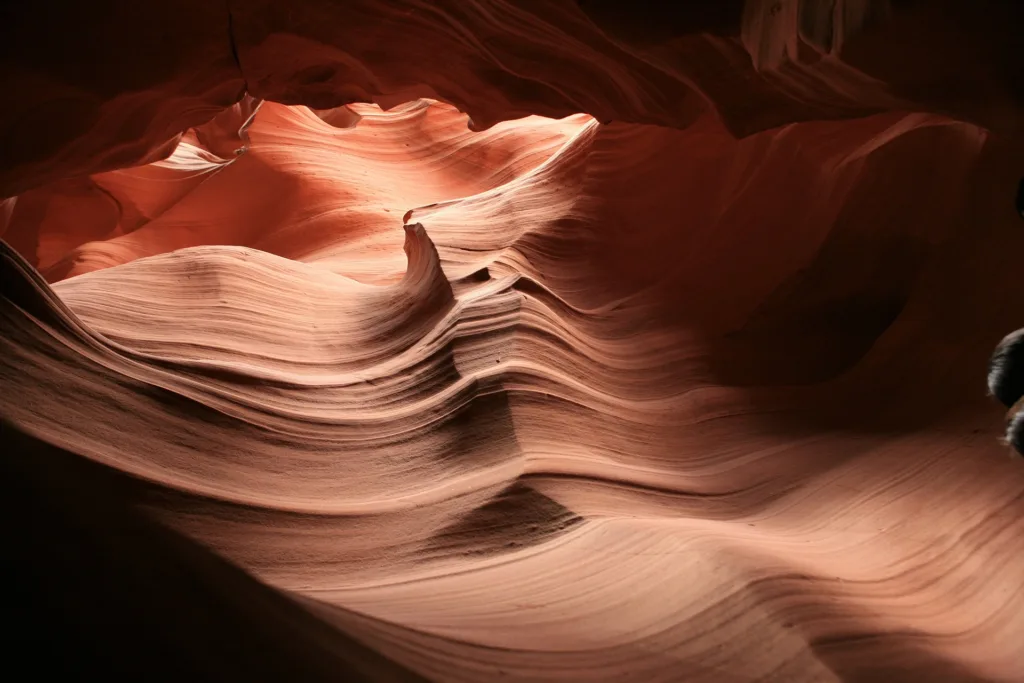
- Decide on the best time to visit: Antelope Canyon is beautiful year-round, but the lighting conditions vary depending on the season. Consider visiting during the spring or fall for milder weather and optimal lighting effects. Summer is popular for witnessing the famous light beams in Upper Antelope Canyon, but it can be crowded. Be aware of the weather conditions and check for any seasonal closures or restrictions.
- Choose between Upper or Lower Antelope Canyon: Both sections offer unique experiences, so decide which one suits your preferences. Upper Antelope Canyon is more accessible, has iconic light beams, and is ideal for photographers. Lower Antelope Canyon offers a more adventurous experience with narrower passages and corkscrew formations. You may also consider combining both if time allows.
- Research and book a guided tour: Select a reputable tour company that operates guided tours to Antelope Canyon. Check reviews, compare prices, and ensure they are authorized to conduct tours on Navajo land. Book your tour in advance to secure your spot, especially during peak seasons.
- Consider photography options: If photography is a priority, check if the tour company offers specialized photography tours that allow additional equipment or longer stays. Regular tours also allow photography but may have specific restrictions regarding tripods or certain equipment. Plan your photography gear accordingly.
- Pack appropriately: Antelope Canyon is in a desert region, so dress in comfortable and weather-appropriate clothing. Wear sturdy shoes suitable for walking on sandy or uneven surfaces. Consider bringing a hat, sunscreen, and sunglasses for sun protection. Be mindful of the weather conditions and pack accordingly.
- Check travel logistics: Antelope Canyon is located near Page, Arizona. Plan your travel to Page, whether by car or flying into a nearby airport. Consider accommodations in Page or the surrounding area, and make reservations in advance, especially during peak seasons. Check if your tour company provides transportation to and from the canyon or if you need to arrange it separately.
- Familiarize yourself with tour guidelines: Review the guidelines provided by the tour company regarding meeting points, check-in times, what to bring, and any specific rules or restrictions. Follow their instructions to ensure a smooth and enjoyable experience.
- Be respectful of the environment and cultural significance: Antelope Canyon holds cultural significance for the Navajo people. Respect the natural environment, follow any guidelines provided by the guides, and refrain from touching or damaging the rock formations. Capture memories through photography but be mindful not to disrupt the experience of others or the preservation of the canyon.
By following these steps, you can plan a well-organized and enjoyable visit to Antelope Canyon. Remember to be flexible and open to the natural beauty and surprises that await you in this remarkable destination.
FAQs

How do I visit Antelope Canyon?
To visit Antelope Canyon, you need to join a guided tour. The canyon is located on Navajo tribal lands, and visitors are not allowed to explore it independently. There are authorized tour companies that offer guided tours to both Upper and Lower Antelope Canyon.
Can I visit Antelope Canyon without a tour?
No, visiting Antelope Canyon without a tour is not allowed. The Navajo Nation requires visitors to be accompanied by authorized guides to ensure safety and preserve the cultural and natural integrity of the canyon.
Are there age restrictions for visiting Antelope Canyon?
There are no specific age restrictions for visiting Antelope Canyon, but it’s important to consider that some parts of the canyon may involve climbing ladders, navigating narrow passages, or walking on uneven terrain. It’s advisable to check with the tour company regarding suitability for young children or those with mobility issues.
What is the best time to visit Antelope Canyon?
The best time to visit Antelope Canyon is typically during the spring and fall seasons when the weather is milder, and the lighting conditions are optimal. Midday in the summer months is particularly popular for witnessing the famous light beams in Upper Antelope Canyon. It’s recommended to check with tour operators for the best time to visit based on your preferences and the lighting effects you wish to experience.
How long does a tour of Antelope Canyon take?
The duration of a tour can vary depending on the tour company and the section of the canyon you visit. Generally, tours last around one to two hours. It’s important to arrive early for check-in and to allow time for transportation to the canyon.
Can I take photographs in Antelope Canyon?
Yes, photography is allowed in both Upper and Lower Antelope Canyon. The unique lighting and stunning rock formations make it a favorite spot for photographers. However, there may be specific rules or restrictions regarding tripods or certain photography equipment, so it’s advisable to check with the tour company beforehand.
Is there an entrance fee for Antelope Canyon?
Yes, there is an entrance fee for visiting Antelope Canyon. The fees vary depending on the tour company and the section of the canyon you visit. It’s important to inquire about the fees and book your tour in advance.
Are there any hiking or physical fitness requirements for visiting Antelope Canyon?
Visiting Antelope Canyon does not require extensive hiking or physical fitness. However, some sections may involve walking on uneven surfaces, climbing ladders, or navigating narrow passages. It’s advisable to wear comfortable shoes and be prepared for moderate physical activity.
Can I visit both Upper and Lower Antelope Canyon on the same day?
It is possible to visit both Upper and Lower Antelope Canyon on the same day, but it depends on the availability of tours and the time constraints. It’s recommended to plan accordingly and book tours in advance to ensure you have enough time for a fulfilling experience in each section.


























